The day they moved Phi Psi
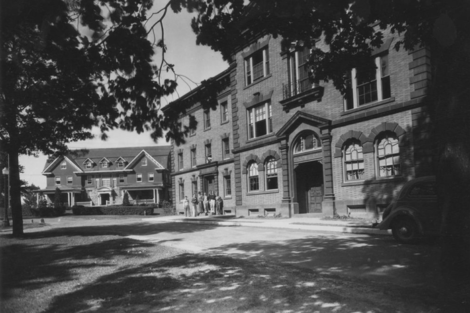
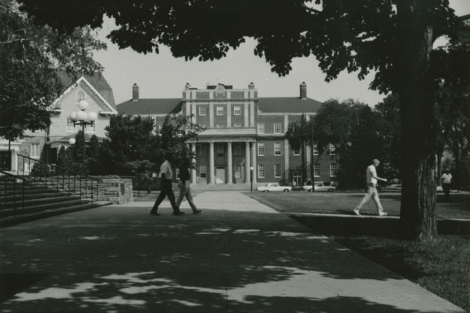
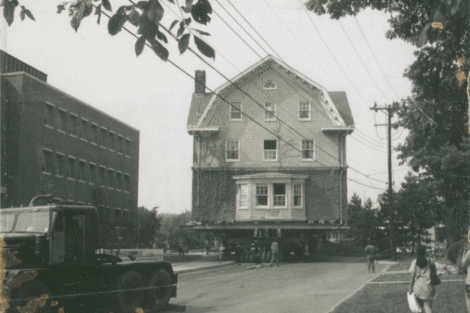
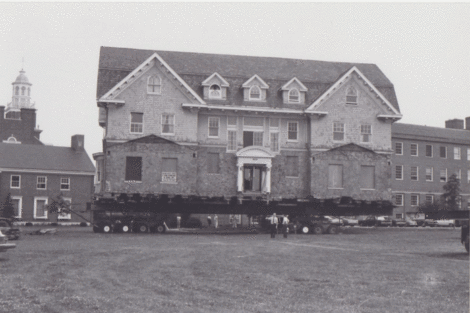
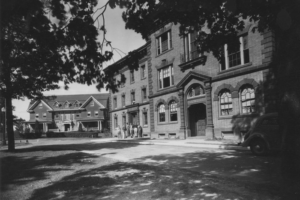
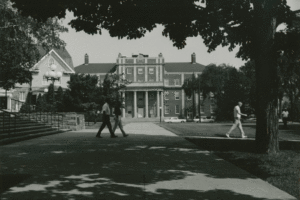
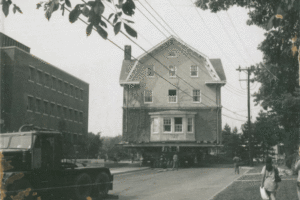

The recent move of the future Portlock Black Cultural Center is reminiscent of the relocation of Phi Psi fraternity from across the street from Markle Hall to its current site on March Field 50 years ago. This was done to enable an expansion of Skillman Library, though that didn’t occur until 1985-87. The following is from the September 1971 Lafayette Alumnus News provided by the libraries’ digital collections:
In what was probably the most intricate and certainly the best observed engineering feat performed on the Lafayette campus in many years, the Phi Kappa Psi fraternity house was picked up and moved a thousand feet this summer.
The 625-ton, three-story, stone and wood frame structure was moved from its original site near the quadrangle, where it had been located since the fall of 1909, to the rear of March Field.
Before they could move the building, workmen had spent nearly all of June building a temporary but portable foundation of wooden beams and steel girders in the basement. Then they carefully freed the house from its thick stone foundation, using air hammers.
As the building remained seemingly precariously balanced on the stacked wood and steel, 56 large truck wheels were positioned in a triangular shape under the girders. Early on June 30, steel cables attached to three huge winches mounted on heavy trucks were connected to the girders and the slow process of moving the house began.
The incongruousness of the sight of the massive building moving ponderously down Sullivan Road to its new site drew a constant flow of spectators (not all of them employees of the College) who stood behind the lines security men had marked off, perched on the roofs of nearby buildings, sprawled on the grass under shade trees or sat on folding chairs they had brought with them. One alumnus, an engineering graduate of the Class of 1950 who lives near campus, said he took a day off from work to watch the delicate task.
The curved path of the building was continuously covered by wooden planks to help distribute the tremendous load over a wider base and provide a smoother route. The winches then tightened the cables simultaneously to inch the building forward slowly. Once it had been pulled up the slight incline from its former foundation site to Sullivan Road near Olin Hall of Science, the path was downhill—but only literally, not figuratively.
A brake cable was then attached to the rear of the mobile hulk to keep it from gathering momentum and crashing into the Kunkle [sic] Hall of Biology, as some skeptics feared it would, or into the Phi Delta Theta fraternity house, as one wag said he hoped it would.
After three days, the 15 to 20 workmen had moved the building to within a few yards of its new site on March Field. It was finally set in place on July 8.
While there was never any doubt that the structure would arrive intact, officials insisted, the College did insure it in transit with Lloyd’s of London for $310,800. This sum was in addition to insurance taken out by the mover, C. Van Howling of Wellington, N.J. D. Darby Duryea ’72 of Ormond Beach, Fla., the fraternity’s undergraduate president, was one of three fraternity brothers who worked for the moving crew.
A television news team from a Scranton-Wilkes-Barre station, WNEP-TV, came to the Lafayette campus on July 1 to film the house being moved. While here, the newsmen interviewed Mr. Duryea, in his working clothes, and the film clip was featured on that evening’s television newscast.
Moving the house cost $56,500, according to the Office of Physical Planning and Operations. Preparing the new site, creating a parking lot there and running in and hooking up utilities to the house were additional expenses.
A new foundation and cellar were expected to be completed by the start of classes so the fraternity could occupy the house in September. The building accommodates 25 students. It was moved to provide space for an anticipated future expansion of David B. Skillman Library.